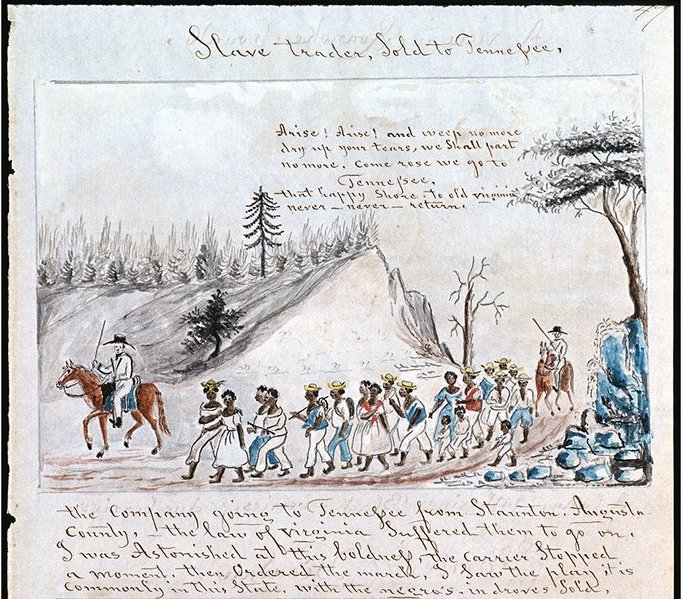Soon, my friend, Paula, and I will head to Mississippi for a week of searching old courthouse records and archives, and maybe even knocking on some doors. We’ll be looking for evidence of William Macon Waller and the slaves he sold in the towns of Raymond and Natchez in 1848.
If you’re new to the blog, for the past couple of years I’ve been transcribing and researching letters that Amherst County, Va., slaveholder William Macon Waller wrote while taking a group of his slaves from Virginia to Mississippi.
My goal is to write a book telling this story.
Waller and his slaves took the overland route, traveling through Virginia, Tennessee and likely Alabama before entering Mississippi’s eastern state line at Columbus. The slaves, including several children, walked 25 or 30 miles a day for 900 or so miles.
According to the letters, it appears Waller rode along on a horse or mule.

Waller was selling his slaves to pay debts he had at home. On the advice of friends and family, he sold them in the deep South because prices were better in cotton country.
In Raymond, he sold “Sarah and child,” Henry, and three sisters named Lucy, Louisa and Sarah Ann.

In Natchez, he sold Ellin, India, Pleasant and Charlotte — all children — along with Anderson (also called Tups), Susan, “Nelson and wife,” “Piney Woods Dick” and “Runaway Boots.”
There were four or five others, but I don’t know their names. It’s possible, they included individuals named McDonald and Emily, but I’m still working on identifying whether they were along on this journey or not.
I’ve included the slaves’ names because, first of all, they weren’t just “Waller’s slaves.” They were people with lives and families. Some, including the girl India, were forced to leave their families in Virginia.
Also, there might be someone out there who recognizes these names or this story from their own family’s oral or written history. If so, I’d like to hear from you. I’d like to tell you more about what your great-great-great-relative survived and share details about their life that you might not know.
Of course, all of this travel and research will make me and Paula hungry, so we’ll also be eating some good food in Mississippi. Hopefully, we’ll hit at least one spot on Garden & Gun magazine’s “Fried Chicken Bucket List.”
And then there are the tamales. Apparently Mississippi is famous for them. Really, it’s a thing. There’s a festival and everything. So, in Natchez, we’ll drop by Fat Mama’s Tamales.
Husband John and I ate at Fat Mama’s a couple of years ago, while traveling home from a wedding in Louisiana. It was definitely worth the detour, as was the town of Natchez, which is an architectural showplace perched above the Mississippi River.

In the spring and fall, Natchez hosts Pilgrimage, when many of its historic houses are open for tours. Paula and I will arrive in town the week after spring Pilgrimage ends, but that’s OK, because we’ll be staying at a historic plantation called Glenfield.
Glenfield, previously called Glencannon, was once owned by William Cannon. According to another letter I’ve transcribed — this one written by a man named James Ware, who helped Waller find buyers for his slaves — Cannon bought the aforementioned Piney Woods Dick and Runaway Boots.
While Cannon didn’t buy the Gothic revival cottage until about three years after Waller came to Natchez, it’s possible that Piney Woods Dick and Runaway Boots lived and worked at Glencannon. So, as you might imagine, we had to stay there.
Thanks for reading. Stay tuned for photos and (hopefully) a report of amazing historical and culinary discoveries on the road.

